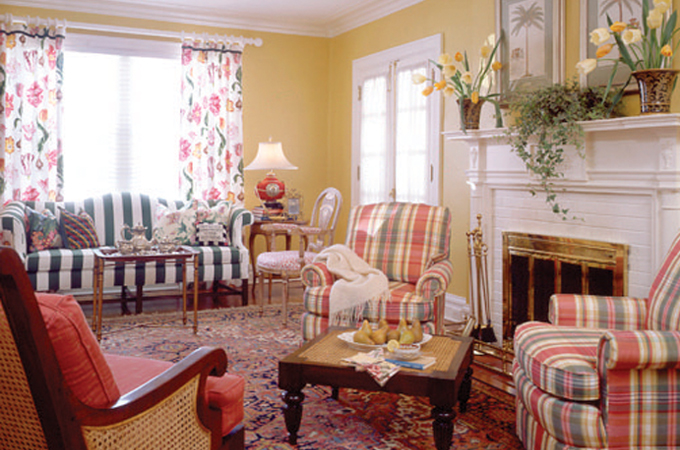If imitation is the highest form of flattery, Asia must have felt very flattered for the past three centuries. The Western world first took note of the decorative and unusual patterns of the East during the 17th and 18th centuries, when the term ‘chinoiserie’ first came on the design scene. Derived from the French word ‘Chinois,’ meaning Chinese, this new/old style covered everything decorative that depicted influences from the East.

Pagodas, dragons, figures and landscapes all were represented on any form of salable item, from porcelain jars to tea towels. These items made their way across the Silk Road trading route (which had opened centuries before) and found their way into the finer homes and palaces of Europe. Baroque and Rococo paintings in their customary style infused with the faces and accoutrements of Eastern influences flooded the market and helped to define a style that is just as popular and recognizable today.
The upper classes and European courts of the 17th and 18th centuries held in high esteem interiors that reflected a sophistication and included items that represented worldly travels, whether the homeowner had made the Grand Tour or not. No style of decorative arts gave that impression more than pieces from the East, which included China, Korea and Japan.
These Eastern civilizations had been perfecting their world for 4,000 years, so the much newer and cruder West was all to0 eager to embrace their talents and represent them in their homes; it was kind of like ‘buying class,’ in a way.
Today, this look is more popular than ever. No matter if you are reading a blog like Chinoiserie Chic or shopping online, you can’t escape this timeless style. Because its lines and characteristics blend so well with all periods, from neoclassic to midcentury, it is a great filler for completing a room. Namaste.
50 shades of … geranium pink
 Spring has sprung! Our minds always begin to turn outdoors when we start seeing the hint of buds on trees and the weather turns a bit warmer. If your mind goes from topic to topic, as mine does, then somewhere in your train of thought, flowers come into play. I always think of geraniums in spring and love them for their ability to continually bloom throughout the season.
Spring has sprung! Our minds always begin to turn outdoors when we start seeing the hint of buds on trees and the weather turns a bit warmer. If your mind goes from topic to topic, as mine does, then somewhere in your train of thought, flowers come into play. I always think of geraniums in spring and love them for their ability to continually bloom throughout the season.
A personal favorite decor color is geranium pink. This is a bold shade, but one that relates well with others. It harmonizes beautifully with green, yellow, brown, purple, black, blue and a whole host of other colors. Geranium can seem like a bold choice, but doesn’t have to be if you use it sparingly. Whether you use it to paint your walls, ceiling or furniture for a strong statement or just to throw in a few toss pillows for fun, this color is sure to make you smile.

trading tips
Among the many decor-related things I’ve done is operate an estate sale business and consignment shop. These are probably two of the ‘greenest’ businesses you will find, as the goal is to connect today’s buyers with the lovely, gently used items you have for sale. It can, however, be a challenge. Some furniture and decor pieces, while beautiful and well-made, are no longer popular. My mission, in those cases, is to find creative ways to market them so that the next generations of buyers find them appealing and walk away excited about their purchase.
By far the toughest piece of furniture to sell today is the armoire that was omnipresent in the ‘80s and ‘90s. These behemoths are, well, too big, and today’s buyer and flat-screen TV viewer just doesn’t need this kind of furniture … unless you can reinvent its purpose.
One of the most creative transformations I’ve found is to turn it into a dry bar. By lining the interior with fabric or painting it (inside and/or out), the doors can be left open to display beautiful decanters and crystal barware. You also can choose to mirror the back (which will cover the cut-out if there is one). Add a silver-handled tray for sophistication and a charming small lamp for illumination, and voila! Your sweater storage now stores Smirnoff! Cheers!
Pictured: chinoiserie
Photo: Decorative Crafts







